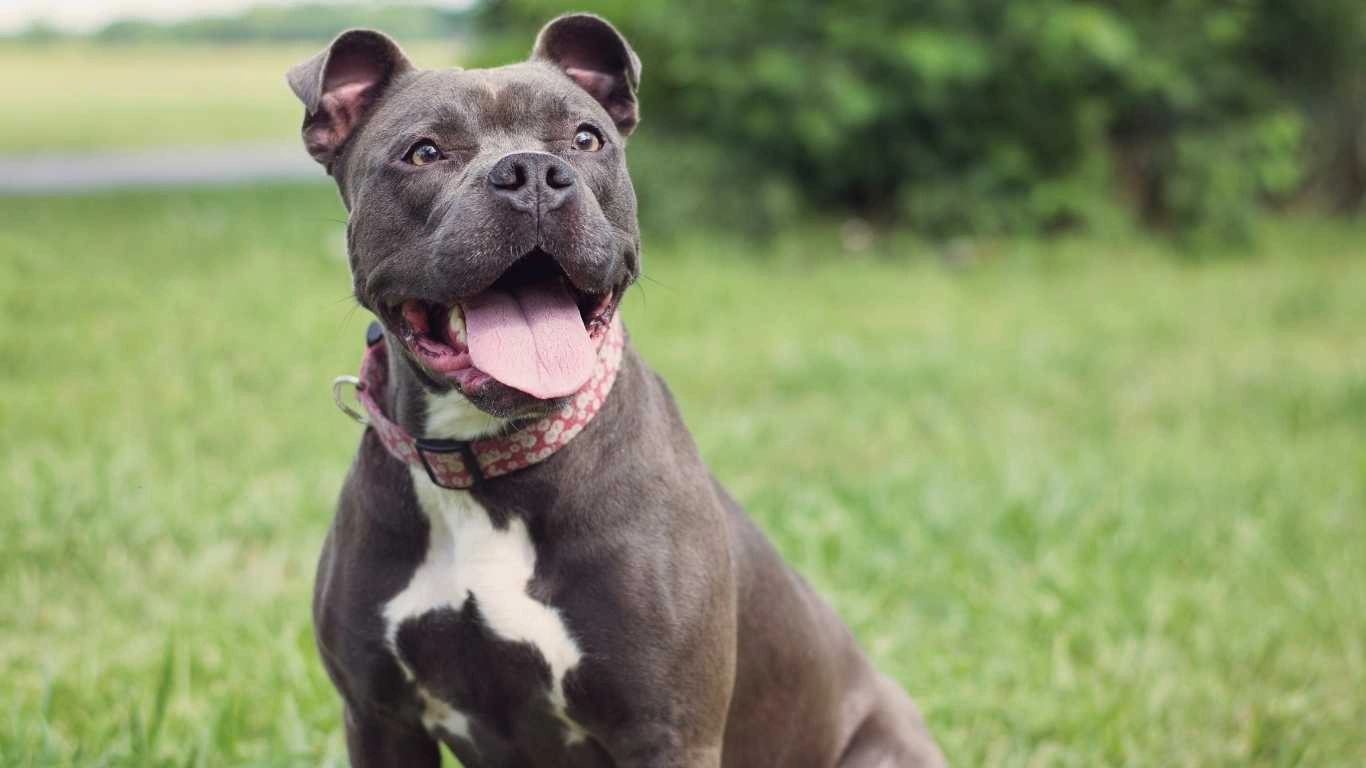How to Make Dog Food More Appealing for Picky Eaters: Tips & Tricks for Success
As a pet nutritionist with years of experience in veterinary clinics, one of the most common challenges I hear from dog owners is how to make dog food more appealing for picky eaters. If you have a dog that refuses to eat or is super selective about their meals, you’re not alone! It’s tough when your dog turns their nose up at their food, especially when you know they need proper nutrition. But don’t worry—there are several effective strategies you can use to help make your dog’s food more enticing. In this post, I’m going to share some simple, actionable tips that have worked wonders for my clients and their pets over the years. So, let’s dive in!
Understanding Picky Eating in Dogs

First, let’s address why your dog might be a picky eater. While some dogs are naturally finicky, there are a variety of factors that can influence their eating habits. As a pet nutritionist, I’ve seen picky eating develop for several reasons, and understanding the root cause can make a huge difference in how you approach the problem.
Health Concerns
One of the first things I check with a dog that’s suddenly become picky is their health. Changes in appetite can often be the first sign of an underlying health issue, whether it’s something as simple as an upset stomach or a more serious condition like dental disease, gastrointestinal problems, or even kidney disease. If your dog’s eating habits suddenly change, a quick visit to the vet is a good idea. Once health issues are ruled out or treated, you can focus on making their food more appealing.
Behavioral Factors
Sometimes, picky eating is more about behavior than health. Dogs that are spoiled or frequently fed table scraps may start holding out for something better. I’ve seen this happen with dogs that get special treats or human food often. They start to expect those tasty morsels and turn their noses up at regular meals. Establishing a consistent feeding schedule and avoiding feeding your dog from the table can help correct this behavior over time.
How to Make Dog Food More Appealing for Picky Eaters

Now, let’s talk about practical steps to make your dog’s food more appealing. Whether you’re trying to get a pup to eat more or just looking for ways to enhance their meals, these tips can help increase their interest in food.
1. Mix Wet and Dry Food
If your dog is used to eating dry kibble but isn’t too thrilled about it, mixing in some wet food can be a game-changer. Wet food tends to have a stronger scent and richer flavor, which can be more enticing for picky eaters. I’ve found that adding a spoonful of wet food to dry kibble works wonders for many dogs. If you’re looking for a healthier option, you can also mix in homemade broths or a little bit of plain cooked chicken or beef. Just be sure that whatever you add is dog-safe and doesn’t introduce too many extra calories!
2. Enhance Flavor with Toppers
Another way to make meals more appealing is by adding food toppers. Dog food toppers come in all sorts of flavors and textures, from freeze-dried meats to veggie-based blends. You can also sprinkle some grated cheese on top or mix in a little bit of low-sodium broth. My clients have reported great success with adding things like scrambled eggs, plain yogurt, or even small amounts of peanut butter. These toppings not only boost the flavor but can also provide some added nutrients. However, be mindful of portion sizes to avoid overfeeding.
3. Warm Up the Food
Heat can work wonders when it comes to making food smell more appealing to dogs. The aroma of warmed food is usually much stronger, which can help pique your dog’s interest. Simply pop the food in the microwave for a few seconds (be sure it’s not too hot!) or warm it up on the stove. I often recommend this for dogs who have lost interest in their meals, as it activates the flavors and makes the food more enticing. Just remember to let it cool down a little before serving it to avoid burns!
When You Should Consider Changing Your Dog’s Food

Sometimes, no matter how hard you try, your dog simply doesn’t seem to like the food they’re eating. If you’ve tried all of the above strategies and your dog is still refusing to eat, it might be time to reconsider the type of food you’re offering. Here are a few signs that it might be time for a change:
Food Fatigue
If your dog has been eating the same food for a while and suddenly refuses to eat it, they may just be bored of the flavor. Dogs, like us, can get tired of the same thing every day. Try switching to a new flavor or formula—there are so many great options available, from high-protein diets to grain-free and limited-ingredient options.
Quality of Ingredients
Another consideration is the quality of the food. Not all dog foods are created equal, and some lower-quality brands might not be as palatable to your dog. Look for foods with high-quality meat as the first ingredient, and avoid fillers like corn or by-products. I often recommend trying a premium brand with better ingredients to see if that makes a difference in your dog’s appetite.
With these strategies and tips, you’re well on your way to making your dog’s food more appealing and hopefully ending those picky eating struggles. Remember, patience is key, and it might take a little trial and error to figure out what works best for your furry friend!
Creative Ways to Make Dog Food More Appealing

As I mentioned earlier, making your dog’s food more appealing isn’t always a one-size-fits-all solution. Every dog is different, and what works for one may not work for another. But that’s okay! The key is being creative and willing to experiment with different methods. Let’s dive into more tips and tricks that I’ve found to be effective over the years in getting picky eaters excited about their meals.
4. Add Natural Flavor Boosters
Sometimes all it takes to get your dog interested in their food is adding a little natural flavor booster. There are several options that are safe and healthy for dogs. I’ve seen great success with adding things like:
- Bone broth: Low-sodium, homemade bone broth is full of flavor and rich in nutrients. It’s a great way to enhance the taste of dry kibble or even moisten up a meal. It’s also soothing for your dog’s digestive system!
- Fish oil: A drizzle of fish oil can make food smell and taste irresistible. It’s packed with Omega-3 fatty acids, which are great for your dog’s skin and coat, too.
- Grated cheese: Cheese is a big hit with most dogs, but don’t go overboard—just a sprinkle to add a little extra flavor can do wonders.
- Pumpkin puree: This one’s a fan favorite! Not only does pumpkin have a mild, sweet flavor that dogs love, but it’s also good for their digestion. I’ve used it in both homemade meals and store-bought food to give it a little extra kick.
Don’t be afraid to get creative and try out a few different combinations. Just remember to keep an eye on portion sizes to prevent overfeeding, and always ensure the flavors you’re adding are safe for your dog. After all, you’re trying to make the food more appealing, not turn it into a calorie bomb!
5. Experiment with Different Textures
Believe it or not, your dog’s preference might not be just about the taste but also the texture of their food. I’ve had dogs that would turn up their noses at kibble but devour the same food if it’s wet or has a different consistency. If your dog is picky, try mixing up textures to see what they like best.
You can try:
- Switching between dry and wet food. Some dogs prefer one texture over the other.
- Crushing dry kibble and mixing it with wet food to make it more enticing.
- Switching to freeze-dried or dehydrated food that can be rehydrated with water for an interesting texture.
If you haven’t yet experimented with freeze-dried food, it might be worth looking into. It’s full of protein and can have a great, crunchy texture that many dogs enjoy. My clients who’ve tried it often report that their dogs can’t get enough! Play around with different combinations to find the texture that works best for your dog.
When to Consider Switching to a New Dog Food Brand

There’s a possibility that no matter what you try, your dog just won’t be interested in the food you’re offering. This can be frustrating, especially when you’re trying everything to make it more appealing. If you’ve exhausted all the tricks and your dog is still refusing to eat, it may be time to consider switching to a different brand of food.
Why Consider Switching?
There are a few reasons why a change of food could work for your dog:
- Different flavor profiles: Some dogs simply don’t like the flavor or smell of certain foods. Switching to a different flavor or protein (chicken, beef, lamb, fish) might spark their interest.
- Quality of ingredients: Higher-quality brands tend to have more appealing flavors, and they’re often made with better ingredients. Dogs are more likely to enjoy food that’s made with whole meats and fewer fillers.
- Food sensitivity or allergies: If your dog is picky and also has issues with their skin, digestion, or overall health, there’s a chance that they have a food sensitivity or allergy. Switching to a limited ingredient diet or hypoallergenic formula might help.
As a pet nutritionist, I always stress the importance of reading labels and choosing the best food for your dog. Don’t hesitate to reach out to your vet or nutritionist to discuss options that are best suited to your dog’s needs. If you’re making a switch, do so gradually over the course of a week to avoid upsetting your dog’s stomach.
Choosing the Right Type of Dog Food
There are so many types of dog food out there today, which can be overwhelming when you’re trying to pick the right one for a picky eater. Here’s a quick rundown of the most popular options:
- Dry kibble: Often the most affordable option, dry kibble is convenient and can be stored easily. However, some dogs might not find it as appealing as other options. You can make it more enticing by adding moisture or flavor boosters.
- Wet food: Typically more flavorful and aromatic than dry kibble, wet food is a good option for picky eaters. It’s also easier to chew, which can be helpful for older dogs or those with dental issues.
- Raw food: Some dogs thrive on a raw food diet, especially when it’s fresh and high quality. If you’re considering switching to raw food, it’s important to work with your vet to ensure it’s nutritionally balanced.
- Dehydrated or freeze-dried food: These options can be more palatable to some dogs due to their rich flavor and different texture. It’s also a great option for owners who prefer to avoid the preservatives in canned food.
Make sure to choose the right type based on your dog’s preferences, any health concerns, and your own convenience. The right food could be the key to getting your picky eater excited about mealtime again!
Making Mealtime Fun: Adding Variety and Positive Reinforcement

Sometimes, picky eating can become a bit of a routine, and your dog may just be bored of the whole process. One thing I always suggest to my clients is making mealtime more enjoyable by adding a little fun into the mix.
6. Create a Feeding Routine
Dogs are creatures of habit, and having a regular feeding schedule can actually help them develop an appetite. You might think that leaving food out all day will give your dog the choice to eat whenever they want, but in reality, this can lead to grazing and an overall lack of interest in their meals. Try feeding your dog at the same time every day, and remove any leftover food after 20-30 minutes to help them associate mealtime with eating.
7. Positive Reinforcement
Sometimes dogs need a little encouragement to eat. Using positive reinforcement can create a positive association with mealtime. Whenever your dog finishes their food, shower them with praise and maybe a little treat or two. This can help them associate eating with something enjoyable. Over time, they may become more willing to eat on their own!
With patience, creativity, and some of the strategies I’ve shared, you can help your picky eater enjoy their food and get the nutrients they need to stay healthy and happy. Don’t give up! Your dog’s perfect meal solution is out there—you just have to find it.
How to Stay Consistent with a Picky Eater

As we’ve discussed so far, making food more appealing to picky dogs takes time, patience, and a bit of trial and error. One thing I always tell my clients is the importance of staying consistent. It can be tempting to give in to your dog’s whims, but consistency is key to overcoming their pickiness. Let’s talk about how you can stay on track while dealing with your dog’s eating habits.
8. Set a Feeding Schedule
Dogs thrive on routine, and feeding them at the same times every day helps them understand when it’s time to eat. One of the biggest mistakes I see owners make is leaving food out all day or offering multiple meals. This can lead to grazing behavior and further disinterest in food. Set a clear feeding schedule—usually, twice a day works for most dogs—and stick to it. If your dog hasn’t finished their meal in 20-30 minutes, simply remove it. This helps create structure and shows your dog that mealtime is limited.
When you set a schedule, you’re also training your dog to expect food at certain times. This consistency can help boost their appetite, especially if you pair it with one of the other strategies like enhancing the food with toppers or mixing in wet food. Remember, patience is the name of the game here—don’t give up after a day or two. Dogs need time to adjust to new habits.
9. Don’t Give In to Table Scraps
One of the most common causes of picky eating is overfeeding or spoiling your dog with table scraps. It can be hard to resist those adorable puppy eyes when your dog looks up at you during dinner, but feeding them scraps can set them up for a lifelong habit of picky eating. I’ve seen clients who, despite their best efforts, end up reinforcing picky behavior by offering tidbits from their plate or feeding treats to “encourage” eating. However, all this really does is confuse your dog. Stick to the schedule, and don’t offer human food unless it’s specifically made for dogs.
In addition, overfeeding can lead to other health problems like obesity. If you’re struggling with picky eating, it’s better to focus on making the meals you do offer as delicious and nutritious as possible rather than constantly giving in to their demands for human food.
What If Your Dog Still Isn’t Eating?

Despite trying all the tricks in the book, there’s still a chance your dog may not be interested in their food. When this happens, it’s important to rule out any potential health issues that might be causing their disinterest. Even though picky eating can be a behavioral issue, I’ve encountered cases where health concerns were the real culprit. Here are some things to consider:
Health Issues to Watch For
As a pet nutritionist, I always advise clients to have their dog thoroughly checked by a vet if they’re not eating regularly. A sudden loss of appetite can sometimes indicate a serious issue, including:
- Dental problems: If your dog has trouble chewing, it may refuse to eat because of pain. Check their teeth and gums for signs of gum disease or tooth decay. If you suspect this, consult with your vet for a dental exam.
- Gastrointestinal problems: Issues like nausea, vomiting, or diarrhea can affect your dog’s appetite. A change in food, added stress, or an infection can all contribute to GI upset.
- Infections or illnesses: Lack of appetite can be a sign of underlying infections, liver disease, kidney disease, or even cancer. If you notice other symptoms, it’s important to consult a vet immediately.
If your dog’s picky eating persists or is accompanied by other signs of illness, such as lethargy or unusual behavior, seeking veterinary advice is crucial. A vet will be able to run tests and offer professional recommendations tailored to your dog’s specific condition.
When to Seek Professional Help
If your dog’s pickiness continues and you’ve already ruled out health issues, it might be time to consult a pet nutritionist or a veterinary behaviorist. Sometimes picky eating can be due to anxiety, stress, or a negative association with food. In these cases, a professional can help you develop a tailored plan to address the issue. Behavioral experts may work with you to create a positive relationship with food and correct any emotional barriers that are affecting your dog’s appetite.
Building a Long-Term Solution for Picky Eaters
Ultimately, the key to handling a picky eater is consistency, creativity, and patience. As a pet nutritionist, I’ve worked with many owners who were frustrated at first, but after applying some of the strategies I’ve shared, they found their dog eating with enthusiasm once again.
One thing I always emphasize is taking a holistic approach to your dog’s eating habits. Make sure they’re getting enough exercise, have a calm eating environment, and aren’t facing unnecessary stressors. Also, don’t forget to incorporate positive reinforcement. Whenever your dog eats their meal without fuss, offer praise or a special treat. This positive association with eating will help motivate your dog to eat regularly.
Variety Is the Spice of Life
In the same way that we like to enjoy different flavors and textures, your dog may simply need variety to keep things interesting. As I’ve mentioned, mixing up the textures, adding toppers, and occasionally changing flavors can reignite your dog’s interest in their meals. Don’t be afraid to switch things up every few weeks or months to keep your dog engaged with their food.
Be Patient and Understanding
Finally, always remember that picky eating doesn’t happen overnight. It takes time to break old habits and get your dog used to eating their meals without hesitation. But with persistence and a little creativity, you’ll find a solution that works for both you and your furry friend. It’s a journey, but one that’s definitely worth taking for the health and happiness of your dog!
References
Disclaimer
The information provided in this article is for general informational purposes only and is not a substitute for professional veterinary advice. Always consult with your veterinarian or a certified pet nutritionist for tailored guidance on your pet’s health and nutritional needs.






